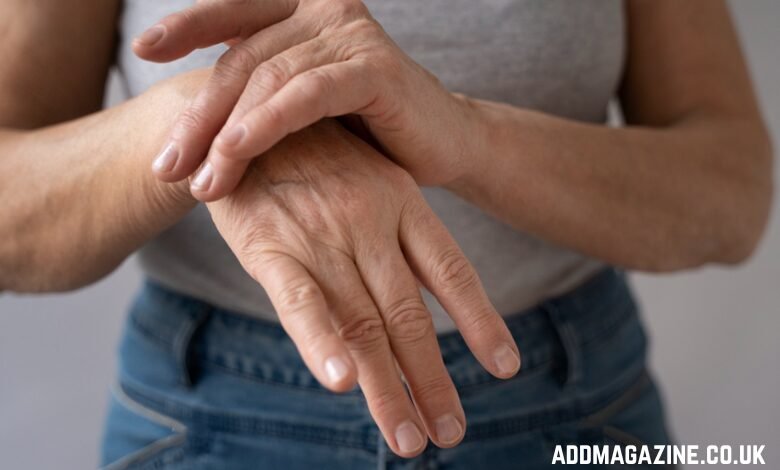Carpal tunnel syndrome is a common condition that affects the hand and wrist, often caused by pressure on the median nerve as it passes through the narrow carpal tunnel in the wrist. Many people initially manage the condition with non-surgical treatments such as rest, splinting, and physiotherapy. However, when symptoms persist or worsen, surgery may be recommended. A carpal tunnel syndrome operation can do more than just relieve pain – it can also prevent further damage to the hand and reduce the risk of long-term complications.
This article explores how surgical treatment helps protect hand function, what patients can expect during recovery, and how procedures like this can be a crucial part of hand injury treatment.
Understanding Carpal Tunnel Syndrome
What Causes the Condition?
Carpal tunnel syndrome develops when the median nerve, which controls sensation and movement in parts of the hand, is compressed within the carpal tunnel. This compression may be caused by repetitive hand movements, prolonged use of vibrating tools, arthritis, or underlying health conditions such as diabetes.
Common Symptoms
- Tingling or numbness in the thumb, index, middle, and part of the ring finger
- Weakness when gripping objects
- Pain or burning sensation radiating up the arm
- Hand fatigue during simple tasks such as typing or holding a phone
If left untreated, the condition may lead to permanent nerve damage and reduced hand function.
Why Surgery Becomes Necessary
Limitations of Non-Surgical Approaches
For mild cases, rest, splinting, and anti-inflammatory treatments may provide relief. However, if symptoms persist beyond several months or worsen despite treatment, surgical intervention is often recommended.
Preventing Permanent Damage
The primary purpose of a carpal tunnel syndrome operation is to relieve pressure on the median nerve. By doing so, it prevents ongoing nerve compression that could otherwise cause permanent numbness, muscle weakness, and even muscle wasting in the hand.
How the Operation Works
Surgical Technique
Carpal tunnel release surgery is the most common procedure. During this operation, the surgeon at a seattle hand surgery clinic cuts the ligament that forms the roof of the carpal tunnel, creating more space for the median nerve and tendons. This relieves pressure and allows normal nerve function to resume.
Types of Carpal Tunnel Release
- Open Release Surgery – involves a small incision in the palm to access the ligament.
- Endoscopic Surgery – uses a smaller incision and a camera-guided instrument, often resulting in quicker recovery.
Both approaches are effective, and the choice depends on the patient’s condition and the surgeon’s recommendation.
Benefits of Carpal Tunnel Surgery
Relief of Symptoms
Most patients experience a significant reduction in pain, tingling, and numbness after surgery. This allows them to perform daily activities without discomfort.
Improved Hand Function
By restoring nerve function, surgery often improves grip strength and hand coordination, making tasks like typing, lifting, and writing easier.
Prevention of Long-Term Damage
Perhaps the most important benefit is preventing permanent damage. Left untreated, carpal tunnel syndrome can lead to chronic pain and muscle wasting, which surgery helps to avoid.
Part of Broader Hand Injury Treatment
In many cases, carpal tunnel surgery is not just about symptom relief but also about protecting the overall health of the hand. As part of comprehensive hand injury treatment, it ensures that patients maintain function and reduce the risk of disability.
Recovery After Carpal Tunnel Operation
Immediate Post-Operative Care
- Bandages or splints are usually applied to protect the hand.
- Patients may experience mild soreness and swelling, which generally resolves within a few weeks.
- Gentle hand exercises are often recommended to restore mobility.
Long-Term Recovery
Most patients regain normal function within six to twelve weeks, although complete healing may take longer for severe cases. Gradual improvement in strength and coordination continues over several months.
Returning to Daily Activities
- Light activities such as writing or typing may resume within a couple of weeks.
- Heavy lifting or strenuous hand movements should be avoided until cleared by a doctor.
Reducing the Risk of Recurrence
Workplace Adjustments
Since repetitive strain is a major factor, adjusting work practices is essential. This may include ergonomic keyboards, wrist supports, and taking frequent breaks.
Hand and Wrist Exercises
Simple stretching and strengthening exercises can keep the wrist flexible and reduce pressure on the median nerve.
Lifestyle Considerations
Maintaining a healthy weight, managing chronic conditions such as diabetes, and avoiding prolonged repetitive wrist movements also help reduce recurrence.
The Role of Surgery in Comprehensive Hand Care
When Combined with Other Treatments
Carpal tunnel surgery may be performed alongside other hand injury treatments such as tendon repair or arthritis management. This holistic approach ensures the hand regains maximum function.
Protecting Overall Hand Health
For patients who rely heavily on their hands for work, from office workers to manual labourers, surgery is often the best way to protect their livelihood and prevent disability.
Final Thoughts
A carpal tunnel syndrome operation is more than a way to relieve discomfort – it is a preventative measure that protects the hand from long-term damage. For individuals experiencing persistent symptoms, surgery provides significant benefits, including restored function, pain relief, and the prevention of permanent nerve injury.
When included as part of a broader hand injury treatment plan, carpal tunnel surgery plays a vital role in preserving quality of life and ensuring patients can continue to use their hands effectively in daily activities and work.
For anyone struggling with persistent hand pain or numbness, consulting a qualified specialist is the first step toward long-term relief and protection of hand health.




